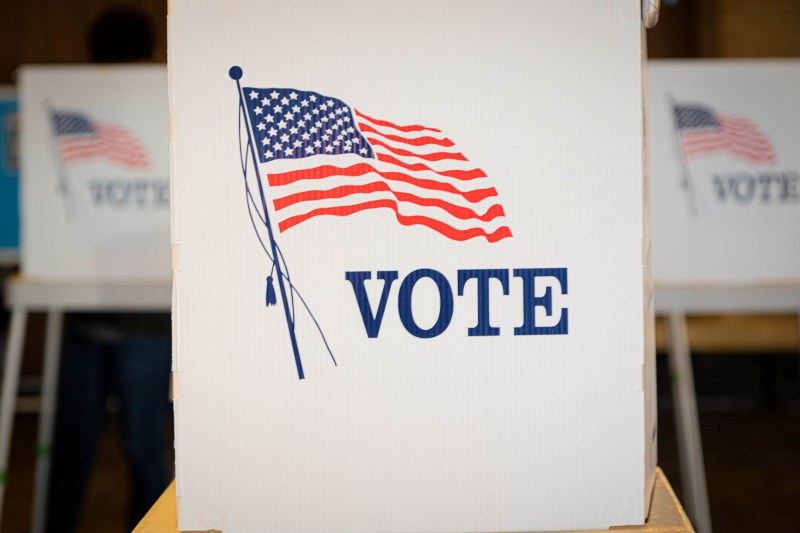One week after the midterm elections, where Democrats outperformed polling expectations and defied the Republican Party’s promise of a “red wave,” many Stanford politics experts said they were pleasantly surprised by the results and praised voters for rejecting extremism.
Democrats retained control of the Senate and still hold a chance at keeping the House, though Republicans are favored to win enough of the yet-to-be-called races to secure a majority. The Senate currently has 50 Democratic seats and 49 Republican seats, with the election in Georgia heading to a runoff.
“I very much expected Republicans to gain control of both the Senate and the House given the low approval ratings of Biden and the inflationary pressures hurting the economy,” said Colin Chen, the associate director of the Center for Ethics in Society. “But that did not happen.”
Democrats successfully defended all of their Senate incumbents except in Georgia, where incumbent Raphael Warnock and challenger Herschel Walker will be moving forward to a runoff election in December after tight election results. The Democrats were also able to flip Pennsylvania’s open U.S. Senate seat, where John Fetterman (D) defeated his challenger after the Republican incumbent chose not to run for re-election. The runoff election will determine whether Democrats maintain a 50-50 Senate or increase their majority by one.
In the former case — which would come by way of a Walker victory in the Georgia runoff — a Democratic majority rests on Vice President Kamala Harris’ tie-breaking power as president of the U.S. Senate.
In either case, this will be the first midterm under a Democratic president in which the president’s party did not suffer a net loss of Senate seats since 1998. Discussing why Democrats performed so well despite President Biden’s low approval rating and the 7.7% inflation rate, Hoover Institution senior fellow Morris Fiorina wrote in a statement to The Daily that election denial and abortion-ban propositions were “making Republicans look too extreme.”
“Most voters aren’t extremists. They like a middle road,” Fiorina said. “So, it wasn’t as much the specific effect of say, election denial, Jan. 6, Dobbs, but the cumulative effect of all these things making Republicans look too extreme. Republican primary voters are on the wrong side of public opinion on such matters and they chose bad candidates, as Mitch McConnell said.”
Fiorina also said that unlike in 1994 and 2010, Democrats did not hold sizable majorities in the federal legislature going into the election. He added that a “Republican wave” did occur in Florida, where Republican leaders did not take the most extreme positions on issues such as election denial and reproductive choice.
“In Florida, Republicans had followed a middle road relative to Florida public opinion,” Fiorina said. “Most Americans can live with a 15-week abortion limit.”
Chen said that in the 2022 elections, voters rejected non-moderate candidates on both sides of the aisle. Because of this, he said he was “hesitant to say that this is a simple victory for Democrats.”
“These election results were a rejection of further left and further right candidates, and showed support for moderates,” Chen said. “If you look at the candidates Liz Cheney supported — Abigail Spanberger in Virginia and Elissa Slotkin in Michigan, for instance — they won. If you look at Trump-backed candidates — Dr. Oz in Pennsylvania — they didn’t all fare so well.”
Chen added that “candidates like Stacey Abrams who were more left also suffered losses.”
Stanford Democrats president Cameron Lange ’24 expressed great enthusiasm over the midterm results, especially Governor Gretchen Whitmer’s victory in Michigan, which helped Democrats reclaim both chambers of the state legislature for the first time since 1982.
However, she said she was disappointed by the low turnout of young voters — even if it exceeded midterm turnouts in the past few decades among the age demographic.
“A lot of people are celebrating this 27% youth turnout figure because it represents a substantial increase from the 2010 and 2014 midterms,” Lange wrote to The Daily. “That’s true, but I think a state of affairs in which just one in four young adults [is] casting ballots is patently unacceptable. It’s no wonder we have a climate crisis, a student debt crisis — these are issues that predominantly affect young Americans.”
Even so, Hoover senior fellow Chester Finn said these midterms provided a definitive rejection of anti-democratic extremists such as Arizona’s Republican gubernatorial candidate Kari Lake. He said these results will allow the American government to now address the most pressing crises of the day.
“With some worrying exceptions, election deniers fared badly and so did Donald Trump. Some good folks actually won,” Finn said. “This boosts the odds that the crazies will move toward the rearview mirror and that we can grapple more constructively with the future. Almost everyone knows that’s what’s needed.”
